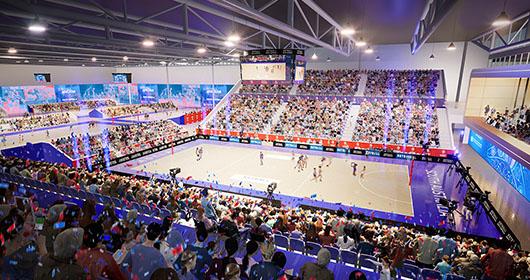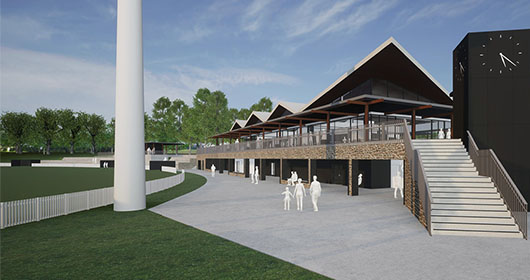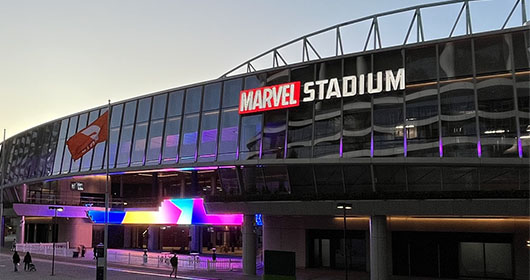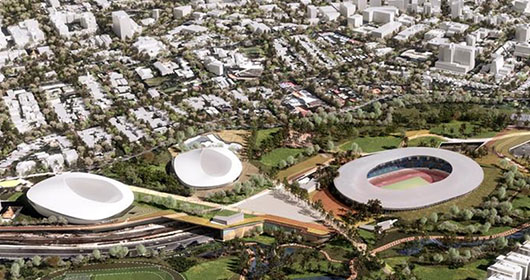Possible St.George Stadium upgrade for Sydney FC
The desire to honour the late Johnny Warren could provide the catalyst for Sydney's first football stadium, writes Michael Cockerill.
Sydney may yet get its first football-specific stadium if plans to honour the late Johnny Warren gain momentum.
The Sydney Morning Herald understands preliminary discussions have been held within Football Federation Australia to revisit the concept of converting St George Stadium - the ground Warren graced as both player and coach during the 1970s - into a boutique 15,000-seat venue for Sydney's A-League club, as well as a training venue for the national team, the site of an academy and an administrative headquarters for the FFA, perhaps including a museum.
While the idea is not new - it has been around since Frank Arok coached both St George and Australia during the 1980s - Warren's death last year has rekindled enthusiasm for the project.
Situated on crown land next to the Cooks River at Kyeemagh, the stadium was last renovated during the 1970s and is home to St George in the NSW Premier League. The club is finalising the transfer of the lease (which runs to 2015) from the former owners, St George Budapest, in order to start its own redevelopment project.
"We've already started going down a path, we've been talking to banks and we definitely want to rebuild the stadium and name it after Johnny Warren," said Saints president Ross Gardner.
"But if someone else wants to talk to us about their own plans, then we're happy to listen. The only proviso is that our own requirements are looked after in any redevelopment. But at the end of the day we're on about the same thing - Sydney needs its own soccer venue, and this is the best place to do it."
Indeed, the lack of football-specific venues in the A-League's three biggest markets - Brisbane, Sydney and Melbourne - looms as a major stumbling block for the new competition. FFA has chosen to ignore one of the key recommendations of another model for a new national league proposed by the players' union - that smaller, boutique venues were crucial to the long-term sustainability of both the clubs and the league in general.
Admittedly, such venues are in short supply in Brisbane, Sydney and Melbourne - not least because football missed the boat at the Sydney Olympics, when government funding was instead directed into stadiums used predominantly by other sports (the Gabba and the MCG).
Despite football being the biggest Sydney 2000 drawcard alongside athletics (1,075,136 people attended the football), it has been left without its own stadiums in Australia's three biggest cities.
Nonetheless, the FFA still chose to bypass smaller venues in both Brisbane (Ballymore) and Sydney (Parramatta Stadium) in choosing its A-League locations, while it is believed FFA officials are also prodding Melbourne Victory to choose the larger Telstra Dome ahead of Olympic Park.
"They've [FFA] gone down the road of big, shiny stadiums when at the same time the MLS [the US national league] is moving out of big stadiums and into purpose-built smaller venues because they lack atmosphere and they've been costing millions," said one insider, who did not wish to be named. "The US is a similar market to ours and we should be learning from their mistakes."
Size is not the only issue. By having first rights to stadium usage the game also gets to protect its most important ingredient - the playing surface. As it stands, the A-League is going to be using four venues (Aussie Stadium, Suncorp Stadium, EnergyAustralia Stadium and Telstra Dome) which are heavily used by other codes, something of concern when seasons overlap.
Aussie Stadium ground staff will at least have access to reinforced turf grown off-site to repair any damage, and SCG Trust spokesperson Karen Grega wants to put any concerns to rest. "We've had over 60 matches here since the stadium opened and our guys are very experienced at preparing different pitches. I'm sure there won't be a problem."
Queensland Lions coach Miron Bleiberg has also accepted guarantees from Suncorp Stadium ground staff and, despite reservations, believes the club's venue will be a success. "Instead of looking to smaller venues we should try and fill Suncorp," he said. "People in Brisbane will come purely because of the stadium. I think we should be aiming for the sky."
A-LEAGUE GROUNDS: HOW THEY STACK UP
SUNCORP STADIUM
(Queensland Lions)
Capacity: 52,579.
Overview: Far too big for a club which has traditionally struggled for support, even in the state league. The top tier will be closed to halve the capacity, but it will still require a massive marketing push to draw enough people to create atmosphere. The quality of the playing surface, especially at the beginning and the end of the season, could be an issue. Ballymore, at half the size and with a fraction of the traffic, would have been a better choice.
ENERGYAUSTRALIA STADIUM
(Newcastle United)
Capacity: 27,000.
Overview: Local diehards still look longingly west to Birmingham Gardens, but this is the right size and the right location for a club which could draw some of the best crowds in the league. With refurbishment continuing, it will eventually become one of the best stadiums in the competition but, like all grounds dominated by rugby league, the playing surface remains a concern.
CENTRAL COAST STADIUM
(Central Coast Mariners)
Capacity: 20,119.
Overview: Almost the perfect A-League stadium, and games will bring life to the Gosford CBD. The only worry is whether the ground staff have been working on their football knowledge - remember when they stuck rugby league posts in the corners for an NSL game four years ago? But with football now holding the whip hand - the stadium has been a white elephant - everything should be in tip-top shape for the Mariners.
AUSSIE STADIUM
(Sydney FC)
Capacity: 40,792.
Overview: Traditionally the spiritual home of football in Australia, there has always been one significant rider - domination by the two rugby codes has left football treated as a third-class tenant. Hopefully, Frank Lowy's deep pockets, and improved technology (not least in removing grass advertising and markings), will help Sydney FC get value for money on and off the pitch. Lowy chose Moore Park ahead of the much-cheaper Parramatta Stadium, so he'll want to be proved right.
TELSTRA DOME or OLYMPIC PARK
(Melbourne Victory)
Capacity: 56,347 (Telstra Dome), 20,000 (Olympic Park).
Overview: The conundrum for the Victory is whether to be wildly optimistic or realistic. Despite being pushed by head office to go to Docklands, the better option is south of the Yarra, provided a planned redevelopment is guaranteed. Olympic Park may be a bit shabby, and parking remains a bugbear, but the government may yet resolve that and the shape and size is better than Telstra Dome, which is too big, too expensive and has been plagued by turf problems.
HINDMARSH STADIUM
(Adelaide United)
Capacity: 15,000.
Overview: The only football-specific stadium in the country, and it shows. By far the best venue in the competition - right size, right configuration, right playing surface. The full house sign will again be prominent, regardless of results.
MEMBERS EQUITY STADIUM
(Perth Glory)
Capacity: 18,450.
Overview: Halfway towards completion, the redeveloped Perth Oval will perhaps usurp Hindmarsh when it is completed. The arrival of a Super 14 team has spurred a new stage of development and while the Glory lose 1800 seats during the first A-League season because of construction, they will get an extra 4000 back in the end. The best pitch in the country, a players' and fans' delight.
NORTH HARBOUR STADIUM
(New Zealand Knights)
Capacity: 25,000.
Overview: Fans across the Tasman are delighted the re-badged Kingz have moved back across Auckland Harbour after a dispiriting, unsuccessful, stint at Mount Smart. Albany offers a much better football experience - fans are closer to the action, the surface is generally in excellent condition and the smaller capacity will suit the drawing power of the team.




